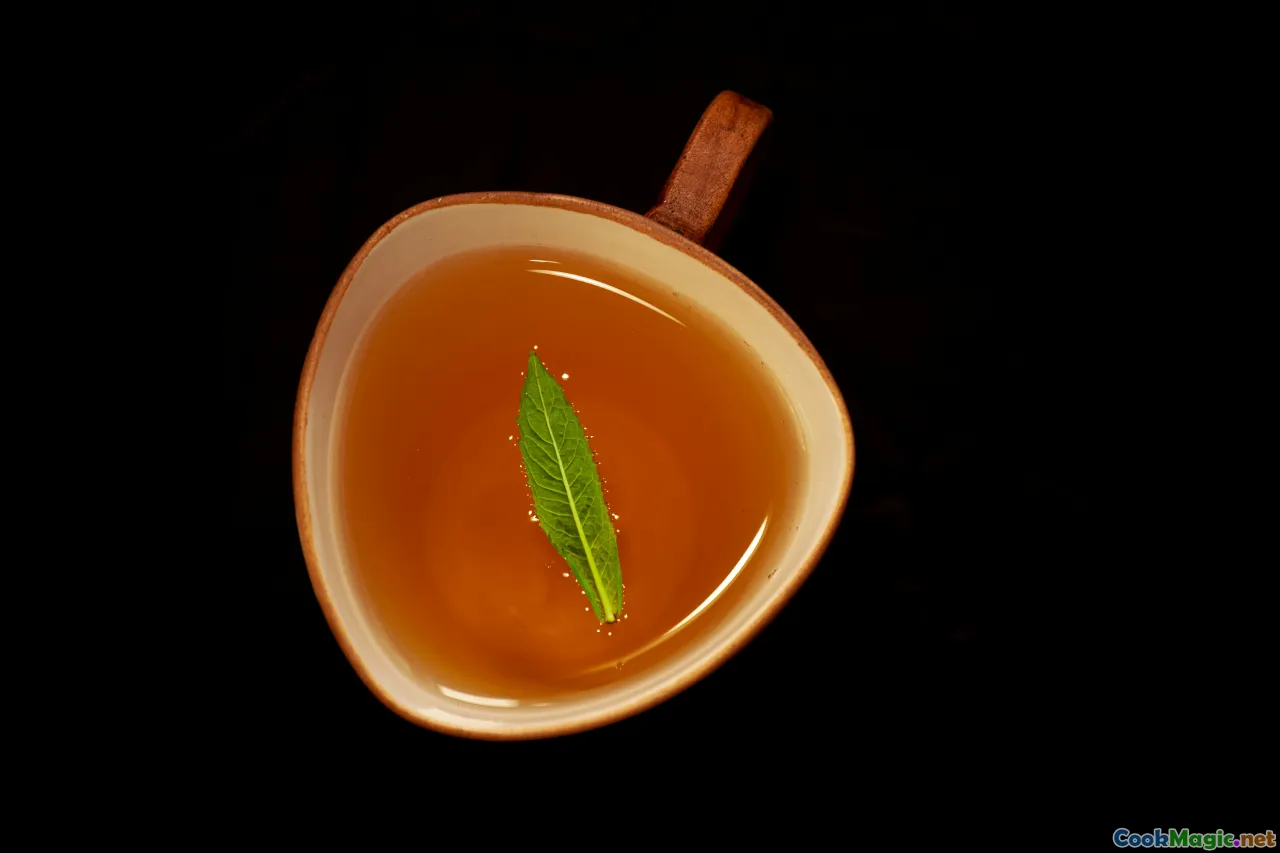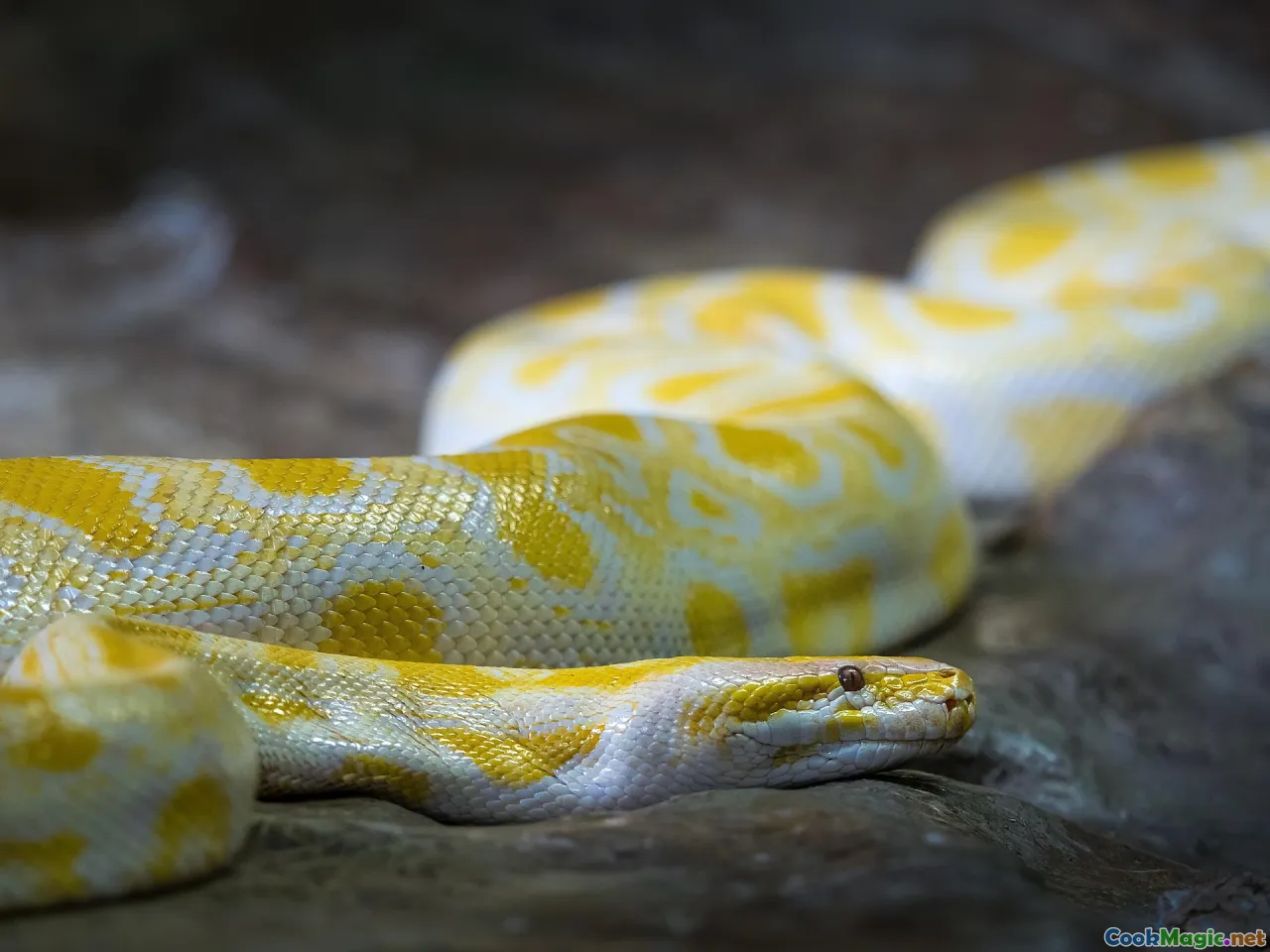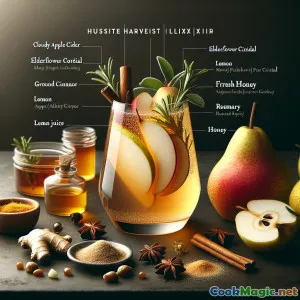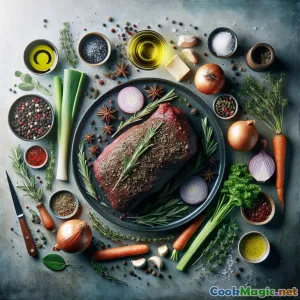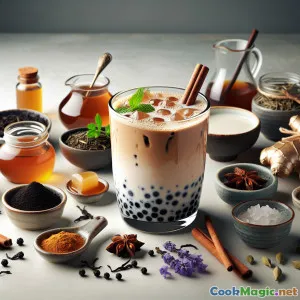
Thé Épicé Thanaka : Une touche birmane au thé anglais
(Thanaka Spice Chai: Burmese Touch to English Tea)
(0 Avis)0
1,068
juillet 20, 2025
Signaler un problème
Ingrédients
-
1 tsp Poudre de Thanaka
(Qualité comestible; saveur boisée et douce.)
-
2 tsp Feuilles de thé noir
(L'Assam, le Ceylan ou le English Breakfast fonctionnent bien.)
-
4 pods Gousses de cardamome
(écrasé légèrement)
-
1 small Bâton de cannelle
(Coupez en deux s'il est long.)
-
1 cm chunk Gingembre frais
(tranché finement)
-
300 ml Lait entier
(Ou alternative sans produits laitiers)
-
220 ml Eau
-
1.5 tbsp Miel
(Ajuster la douceur)
-
3 whole Grains de poivre noir
(cassé délicatement)
-
1/8 tsp Extrait de vanille
(Accroît la complexité des saveurs)
(Qualité comestible; saveur boisée et douce.)
(L'Assam, le Ceylan ou le English Breakfast fonctionnent bien.)
(écrasé légèrement)
(Coupez en deux s'il est long.)
(tranché finement)
(Ou alternative sans produits laitiers)
(Ajuster la douceur)
(cassé délicatement)
(Accroît la complexité des saveurs)
Nutrition
- Portions: 2
- Taille de portion: 1 grande tasse (280 ml)
- Calories: 145 kcal
- Carbohydrates: 0 g
- Protein: 4 g
- Fat: 4.5 g
- Fiber: 1.2 g
- Sugar: 15 g
- Sodium: 50 mg
- Cholesterol: 14 mg
- Calcium: 135 mg
- Iron: 0.5 mg
Instructions
-
1 - Épices chaudes et eau:
Dans une petite casserole, mélangez eau, des tranches de gingembre, de la cardamome, de la cannelle et des grains de poivre. Portez à frémissement et laissez les arômes des épices s'épanouir.
-
2 - Infusion de thé et Thanaka:
Ajoutez des feuilles de thé noir et de la poudre de Thanaka dans l'eau épicée. Laissez mijoter doucement pendant 2 à 3 minutes, en remuant de temps en temps.
-
3 - Mélangez avec du lait et un édulcorant:
Ajoute du lait (et de la vanille si tu en utilises) dans la casserole. Chauffe lentement sans faire bouillir. Mélange le miel jusqu'à obtenir une consistance homogène.
-
4 - Filtre le chai:
Verse le chai à travers une passoire à mailles fines dans des tasses, en appuyant légèrement pour extraire tous les arômes.
-
5 - Servez et Dégustez:
Servez chaud. Décorez avec une pincée de poudre de Thanaka ou avec un bâton de cannelle, si vous le souhaitez. Profitez de cette fusion aromatique !
Dans une petite casserole, mélangez eau, des tranches de gingembre, de la cardamome, de la cannelle et des grains de poivre. Portez à frémissement et laissez les arômes des épices s'épanouir.
Ajoutez des feuilles de thé noir et de la poudre de Thanaka dans l'eau épicée. Laissez mijoter doucement pendant 2 à 3 minutes, en remuant de temps en temps.
Ajoute du lait (et de la vanille si tu en utilises) dans la casserole. Chauffe lentement sans faire bouillir. Mélange le miel jusqu'à obtenir une consistance homogène.
Verse le chai à travers une passoire à mailles fines dans des tasses, en appuyant légèrement pour extraire tous les arômes.
Servez chaud. Décorez avec une pincée de poudre de Thanaka ou avec un bâton de cannelle, si vous le souhaitez. Profitez de cette fusion aromatique !
En savoir plus sur: Thé Épicé Thanaka : Une touche birmane au thé anglais
Thanaka Spice Chai: Bridging English and Burmese Tea Traditions
Thanaka Spice Chai is an inventive twist on classic masala chai, blending time-honored English and Burmese rituals into a drink that truly surprises. Its essence lies in fusing aromatic black tea, staples of British tea culture, with traditional Burmese thanaka — an ingredient most commonly seen as a cosmetic paste, but which in edible-grade powdered form brings an earthy, woody undertone that complements chai's quintessential warming character.
At the Heart of Tradition: Thanaka
Thanaka is unique to Myanmar (Burma) and has been used for centuries in skincare, thought to cool and calm the skin. In culinary applications, it's far rarer, though edible thanaka appears in new-age Burmese and Southeast Asian desserts and drinks as a node to local heritage. Its warm gentle sandalwood notes add mystique beyond common chai spices.
The English Influence
This recipe begins much the way classic English teas do, with hearty black leaves—like Assam or an English Breakfast blend. But here, we move beyond, borrowing from India's popular chai method to deeply infuse both the black tea's briskness and the mixture of warming spices that signal comfort on cold English afternoons.
Aromatic Spice Complexity
Traditional chai relies on cardamom, ginger, cinnamon, and sometimes pepper for a warming, bold kick. Each spice brings body, lift, and warmth, but the subtle introduction of thanaka makes this truly special. Until its recent emergence as a drink flavor, thanaka hadn't left Myanmar’s borders for the cup—the designer here makes it a protagonist in a westward context without overwhelming the well-loved flavors of chai.
Fusion at Every Sip
The addition of honey, creamy milk, and a touch of natural vanilla are nods to both English and Burmese tastes—a mélange of subtle jasmine-wood, malty black tea, lush honey, and creamy dairy. Serving this chai in a larger mug (rather than a dainty teacup) suits the drink’s British robustness and ensures every sip is maximally fragrant and warming.
Tips & Notes
- Thanaka Quality Matters: Always use only edible-grade thanaka available online or from specialist Burmese markets. Cosmetic quality is not safe for eating.
- Balanced Sweetness: Honey is favored for its gentle sweetness, but you can swap for jaggery sugar or brown sugar for more body.
- Milk Flexibility: Whole milk is recommended for richness, but coconut, almond, or oat milk work beautifully for nong-dairy need—particularly as coconut is present in many Burmese sweet soups.
- Spice Variations: This base is adaptable—try a pinch of clove or nutmeg just once and see if you like the variations.
History and Culture Behind the Cup
Britain’s connection to tea is historic and deeply rooted in culture and daily routine. Chai, though South Asian by birth, has become wholeheartedly embraced in the UK, especially in modern worldwide cafés. This Thanaka Spice Chai stands as a boundary-pushing statement of our intermingling food traditions in an age of globalization.
For much of Myanmar’s tea-producing world, tea is chewed as much as sipped, and thanaka adorns many faces but rarely flavors the palate. That’s what makes this recipe thrilling—it’s genuinely cross-cultural, the sandalwood warmth of Burma meeting the classic comfort of English tea and Indian spiciness.
Uniqueness & Flavor Check
Unlike common chai or green-tea blends, Thanaka Spice Chai has a toasty-woody note—think faint palo santo or sandalwood aroma achieved gently and never overpowering. Those looking for a conversation-starting drink (or a playground for experimenting tea connoisseurs) will find this recipe both noteworthy and enjoyable.
Personal Thoughts
As a chef constantly experimenting with the flavors that tie people and places together, I find the inclusion of thanaka deeply symbolic. It’s always a pleasure when something so grounded in local tradition becomes international through ingenuity and curiosity—much like chai, whose story is already so global. Sip this blend on a rainy London night or in the bustling vibrance of Yangon—its embrace is universal, yet its whisper of Myanmar lingers warmly in every cup.


